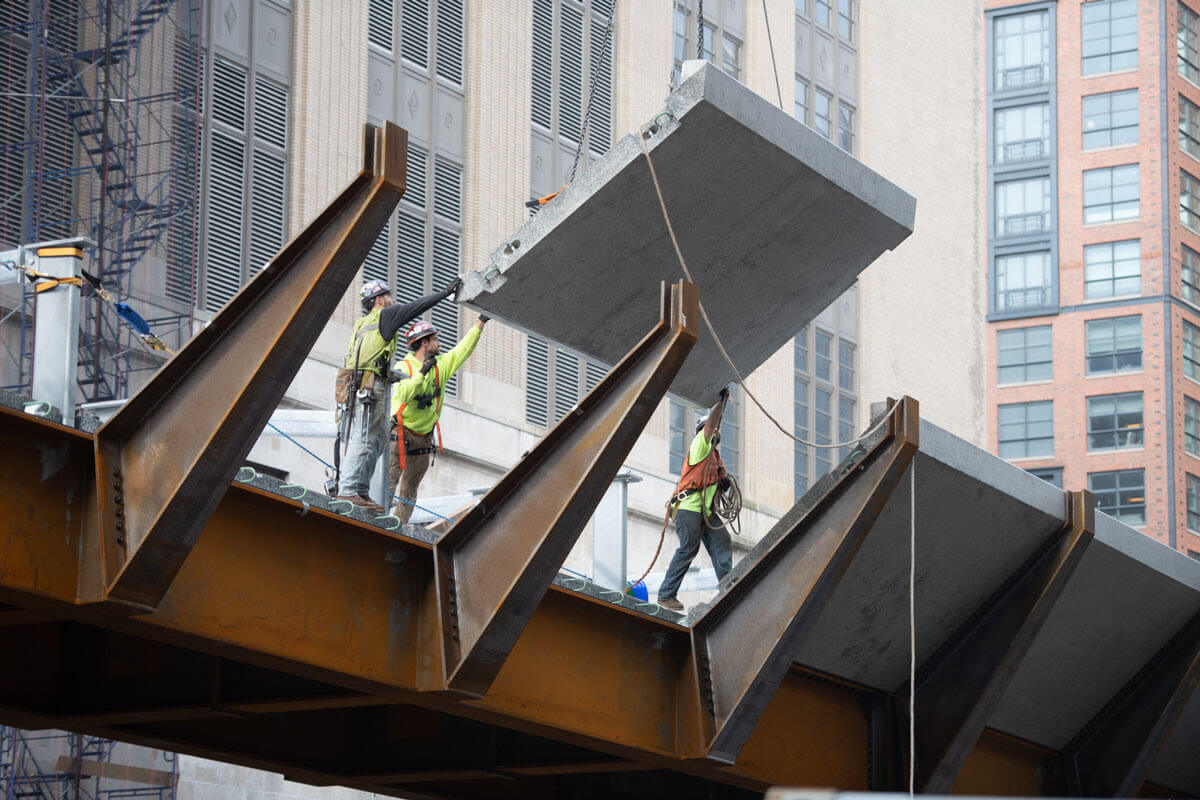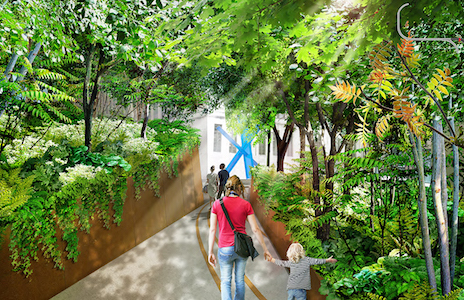You might be able to avoid the traffic to Penn Station with this new mode of transportation. The High Line X Moynihan Connector will link the High Line’s Spur to the public plaza at Manhattan West, the route will lead all the way to Moynihan Train Hall on 9th ave.
The connector broke in February of this year but with construction starting now it will hopefully be reopened for use in the spring of 2023. The design for the connector was originally made in collaboration with James Corner Field Operations, who was a part of the High Line’s original design team, and Skidmore, Owings & Merrill.
“The High Line’s connection to Moynihan Train Hall and other nearby attractions complements our investments in Midtown West, encourages better pedestrian access and provides New Yorkers with a truly one-of-a-kind experience,” said New York Governor Kathy Hochul when referring to the original unveiling of the High Line X Moynihan Connector in September 2021.
The main purpose of the connector is to bring New Yorkers a safe, quicker and more enjoyable way to get to where they need to go. The connector will link together neighborhoods, institutions, businesses, parks and transportation hubs.
The connector consists of two intersecting bridges, the Woodland Bridge and the Warren Truss-style Timber Bridge. A majority of construction has been focused on the Woodland Bridge which branches off of the High Line’s Spur and serves as the main connection point. The bridge is made up out of heavy-duty, custom-shaped precast concrete panels, supported by a steel structure. The bridge creates an approximately 370-foot-long planter.
The Woodland Bridge’s v-shape allows up to 5 feet of soil. This means that the structure will be able to support large-scale trees to provide the city with another point of natural beauty. In the next few months, the bridge will be prepared and filled with soil, once it is secure the planting will begin.
The bridge’s walkway will be suspended over the planter soil, allowing for healthy root growth and protection for the plants. The design will allow for rain water to drip down into the soil which will minimize irrigation demands and upkeep. The bridge will be partially self-sustaining.
“I am personally excited about the seasonality of the planting design,” said Isabel Castilla, principal at James Corner Field Operations, who is working on the landscape design. “It will contribute to providing a very varied experience to users across the year with open vistas and sun exposure in the winter, a colorful array of flowers in the spring, a great sense of enclosure and dappled shade in the summer, and rich colors in the fall.”
The newest addition to the connection, the Timber Bridge, will be pre-constructed in sections offsite and then assembled along Dyer Ave in the next coming months. The Woodland Bridge and the Timber Bridge will connect with each other.





























